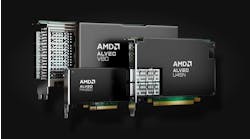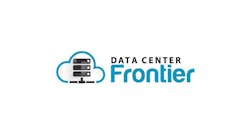Data-Breach Defense: Data Centers are The Biggest Play For Financial Services
On the sidelines, or even within your team, cybercriminals are targeting financial institutions at a rapid clip, using sophisticated tactics to exploit and act on network vulnerabilities. With artificial intelligence and machine learning at the forefront for both trading insights and improved customer experience, opportunities for cyber security threats continue to mount for financial institutions, and the processing capabilities, capacity scaling, and defense mechanisms needed are simply non-negotiable.
Third-party data centers have emerged as critical players in the digital age of finance, providing robust colocation, connectivity security and risk management services to financial institutions. Ensuring the integrity and availability of essential data and performance, data centers provide resilient and secure services to financial services organizations. Colocation within a third-party data center offers many benefits and greater cost-effectiveness than an on-premise environment, especially when it comes to managing stringent and evolving regulatory audits and concerns.
Cashing in on Infrastructure and Redundancy
For financial services, where you host your data and apps are critical, but protecting that data is paramount. The volume and sensitivity of personal and private information require adequate security measures to be taken from the inside out to protect the data housed in the data center and the very building that houses the data. Structurally, colocation data centers often use various physical security measures, including passcode access controls, surveillance cameras, and perimeter fencing, to protect against theft, structural issues, or vandalism. Internally, steps are taken to prevent interferences such as damage or downtime to protect the large amount of sensitive information generated in the financial sector. Data centers attempt to implement redundancy where possible with things such as network connections, power supplies, and backup power to minimize disruptions and data loss, which can lead to significant financial repercussions and customer frustration.
Plan of Attack: Invaluable Cybersecurity Planning and Procedures
Thwarting cyberattacks is an ongoing exercise for data centers to ensure that they are not just one but two and three steps ahead of cybercriminal activity. Necessities such as employing firewalls, intrusion detection systems (IDS), and distributed denial of service (DDoS) mitigation strategies are best practices. Still, they must also be monitored, evaluated, and updated continuously to ensure maximum effectiveness. Data centers often employ encryption techniques to protect data at rest and in transit. Encryption ensures that even if data is compromised, it remains unreadable to unauthorized individuals. Advancements in technology, such as AI, are providing data centers with opportunities to automate specific tasks; however, at this point, human oversight is still very much part of the equation, and a holistic approach is the safest bet to date.
Going the Distance: Disaster Recovery and Business Continuity
Financial institutions must be prepared for unforeseen, worst-case scenarios like natural disasters or system failures. In times of crisis, customers will be desperate to access financial information, and financial institutions must be there to support them as best as possible. Data centers provide disaster recovery and business continuity services to ensure minimal client disruption. When it comes to backup and recovery, data centers maintain backup copies of critical data, allowing for rapid recovery in case of data loss. Regular testing of recovery procedures ensures their effectiveness.
Playing by the Rules: Compliance and Certification Navigation
Financial institutions face complex industry-specific standards like SOX, EFTA, FISMA,PCI DSS and more. Data centers can help financial institutions maintain data integrity and confidentiality by offering robust compliance services with these regulations, such as providing audit trails and data governance solutions. Additionally, certifications such as the HITRUST Risk-based, 2-year Certification are extremely valuable, as they ensure that data center facilities and systems have met key regulations and industry-defined requirements and appropriately manage risk.
For financial companies, data dependency shows no sign of slowing down, and costly breaches in security will undoubtedly come along for the ride. Partnering with the right data center company can make all the difference for financial institutions. It can create an indispensable partnership in the fight to safeguard sensitive information and data from modern-day cyber attacks.
Mark Cooley is Vice President of Security and Compliance at Involta, a leading, enterprise-class IT infrastructure partner that empowers clients to reimagine their worlds through technology. Contact Involta to learn more about its advanced hybrid cloud solutions, superior data center experiences and first-class fiber and connectivity services.






